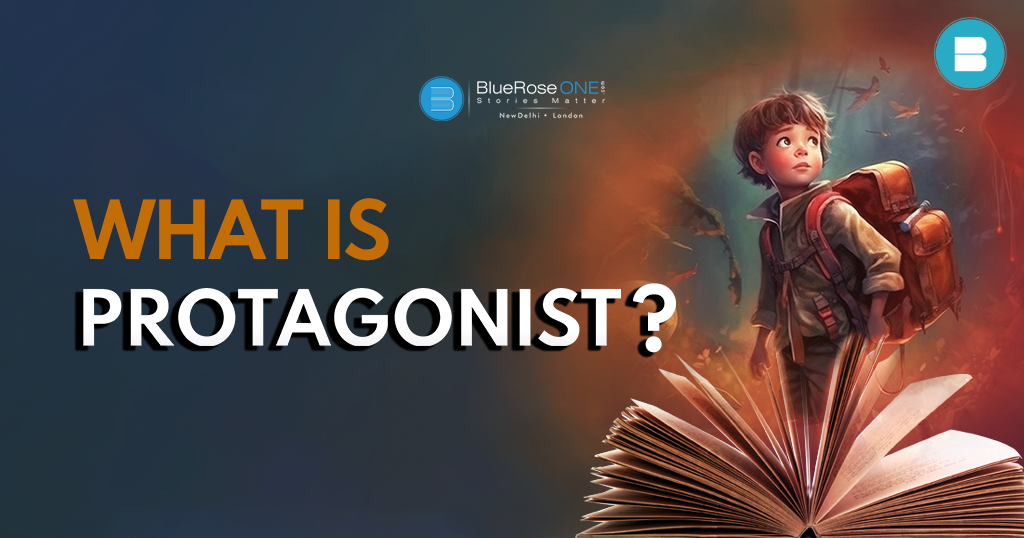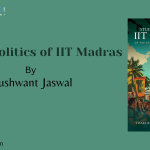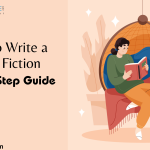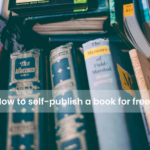When it comes to creative writing, the protagonist stands as the heartbeat of every story. A protagonist isn’t just a character; they are the soul that guides readers through the twists and turns of a narrative landscape. From the intrepid heroes battling dragons to the everyday people navigating life’s challenges, protagonists are the vessels through which readers experience emotions, growth, and transformation.
This blog explores the profound role of the protagonist in creative writing and delves into the intricate dance between the writer, the protagonist, and the reader.
The Essence of the Protagonist
A protagonist is more than a mere protagonist; they are the lens through which the reader gazes into the intricacies of the story world. Like a mirror reflecting the human experience, the protagonist embodies both relatable qualities and unique characteristics that elicit empathy and connection.
Whether it’s a noble quest for justice or a personal struggle with self-discovery, the protagonist’s journey becomes a canvas where readers paint their own emotions and experiences.
For instance, consider Jane Eyre in Charlotte Brontë’s classic novel “Jane Eyre.” Jane’s journey from an orphaned, mistreated child to a strong-willed woman navigating love, identity, and societal expectations mirrors the complexities of real life. Readers are drawn into Jane’s world, relating to her struggles and triumphs, and ultimately empathising with her as she transforms into a resilient, empowered individual.
You may also read: Top 10+ Must Read Books for Teens in 2025
Crafting unforgettable characters
Creating a compelling protagonist requires meticulous crafting. Every detail, from physical appearance to personality quirks, is essential. A well-rounded protagonist is a product of the writer’s deep understanding of their motivations, fears, and desires.
The synergy between a character’s internal and external conflicts is what ignites the narrative’s spark, making the protagonist’s journey one that resonates.
Take Harry Potter from J.K. Rowling’s beloved series, “Harry Potter.” Rowling meticulously develops Harry’s personality, detailing not only his physical appearance but also his vulnerabilities, motivations, and fears. Harry’s internal conflict stemming from his identity as “The Boy Who Lived” and his external conflict against the dark forces of the wizarding world create a multidimensional character that resonates with readers of all ages.
You may also like: How to Write an Author Bio | BlueRoseOne.com
The Arc of Transformation
At the heart of every great story is the arc of transformation—the protagonist’s evolution from the person they were at the beginning to the person they become at the end.
This transformation isn’t just a plot device; it’s a reflection of the human experience. Through the protagonist’s struggles, triumphs, and self-discovery, readers embark on a parallel journey of their own. Witnessing the protagonist’s growth inspires readers to reflect on their own lives, often leading to a newfound sense of empathy and understanding.
Let’s look at Santiago in Paulo Coelho’s “The Alchemist.” Santiago’s evolution from a shepherd with dreams of treasures to a seeker of personal legend mirrors the human pursuit of purpose and fulfilment. As Santiago navigates deserts and encounters mentors, readers connect with his aspirations, catalysing introspection about their own life paths and goals.
Empathy and Connection
Empathy is the bridge that connects readers to the protagonist’s world. A well-written protagonist invokes empathy by tapping into universal human emotions and experiences.
Readers see themselves in the choices, dilemmas, and victories of the protagonist. Through this emotional connection, readers are transported beyond the confines of their own lives, expanding their horizons and fostering a deeper understanding of the world around them.
In Khaled Hosseini’s “The Kite Runner,” Amir’s journey from guilt-ridden betrayal to redemption touches upon universal themes of forgiveness and atonement. Through Amir’s experiences, readers confront their own emotions and confrontations, cultivating a deeper understanding of the human condition.
You may also read: List of Top 10 Nikita Singh Books of All Time
Conflict and resonance
No protagonist’s journey is without conflict. The obstacles and challenges the protagonist faces propel the story forward, engaging readers’ emotions and investment.
Conflict allows the protagonist to grapple with moral dilemmas, personal demons, and external forces, creating a multifaceted narrative that resonates on many levels. A successful protagonist’s journey mirrors life itself—a rollercoaster of emotions, triumphs, and setbacks.
In George Orwell’s “1984,” Winston Smith’s internal rebellion against a dystopian regime reflects the struggle for individuality and freedom in the face of oppression. Winston’s external conflict against a surveillance state resonates with readers grappling with their own ethical dilemmas and societal tensions.
Narrative Empowerment
A strong protagonist isn’t just a character; they empower the narrative. They dictate the pace and tone of the story, making each twist and turn an extension of their identity.
As the protagonist evolves, so do the narrative’s dynamics, keeping readers engaged and invested in the outcome. This synergy between character and story is what transforms a collection of words into an unforgettable experience.
In Harper Lee’s “To Kill a Mockingbird,” Atticus Finch’s unwavering pursuit of justice amidst racial prejudice empowers the story’s exploration of morality and empathy. Atticus’s values dictate the tone of the narrative, inviting readers to contemplate their own convictions and biases.
You may also like: How to Publish a Book? | Publish Your Book | BlueRoseOne
Steps to Brainstorm a strong Protagonist
Crafting a strong protagonist is a fundamental aspect of creating a compelling and engaging story. The protagonist is the character who drives the narrative forward, captures readers’ attention, and guides them through the ups and downs of the plot. To brainstorm a strong protagonist, consider the following steps:
- Identify the Core Theme and Genre: Start by defining the central theme and genre of your story. This will help you determine the qualities and traits your protagonist should possess to effectively navigate the challenges and conflicts of the narrative.
- Establish the Protagonist’s Goal: Determine the overarching goal that the protagonist will strive to achieve throughout the story. Whether it’s a quest for justice, self-discovery, love, or survival, the goal will shape the protagonist’s motivations and actions.
- Character Traits and Flaws: Create a list of character traits and flaws that align with the protagonist’s goal and the story’s theme. A strong protagonist should have both strengths and weaknesses that make them relatable and multidimensional.
- Backstory and Motivations: Develop a backstory that explains the protagonist’s motivations, fears, and desires. Understanding their past experiences and emotional landscape will inform their decisions and actions within the story.
- External and Internal Conflicts: Identify the external and internal conflicts the protagonist will face. External conflicts arise from external forces or circumstances, while internal conflicts stem from the protagonist’s inner struggles, beliefs, or doubts.
- Unique Characteristics: Give your protagonist unique traits or skills that set them apart from other characters. These attributes could be talents, hobbies, or distinctive personality quirks that add depth and intrigue to their character.
- Relationships and Allies: Consider the relationships the protagonist will have with other characters, both supportive allies and potential adversaries. These interactions will shape the protagonist’s growth and decisions.
- Character Arc: Plan the protagonist’s character arc, outlining how they will evolve and change over the course of the story. A well-crafted arc showcases their transformation in response to challenges and experiences.
- Contrast and Complexity: Introduce contrasting elements to your protagonist’s character. This might involve juxtaposing their strengths with their vulnerabilities or displaying moments of moral ambiguity that make them more relatable and intriguing.
- Cultural and Historical Context: If your story is set in a specific time or place, consider how the cultural and historical context will shape your protagonist’s beliefs, values, and actions.
- Name and Appearance: Choose a name that resonates with your protagonist’s personality and background. Additionally, describe their physical appearance in a way that complements their character traits and role in the story.
- Test Your Protagonist: Imagine how your protagonist would react in different scenarios related to the story’s conflict. This will help you refine their responses and ensure their actions are consistent with their personalities and motivations.
You may also read: List of Top 10 Famous William Fauklner Books of All Time
Best Protagonists Ever Written
- Frodo Baggins from “The Lord of the Rings” by J.R.R. Tolkien: Frodo’s humble nature and determination to carry the burden of the One Ring to Mordor highlight his courage and sacrifice. His journey symbolises the power of resilience and the struggle against overwhelming odds.
- Jane Eyre from “Jane Eyre” by Charlotte Brontë: Jane’s resilience and sense of self-worth in the face of adversity define her as a strong and independent protagonist. Her pursuit of love, identity, and personal integrity resonates with readers.
- Holden Caulfield from “The Catcher in the Rye” by J.D. Salinger: Holden’s candid and introspective narrative voice provides a window into the struggles of adolescence and the search for authenticity. His raw emotions and quest for meaning make him a compelling and relatable protagonist.
- Katniss Everdeen from “The Hunger Games” trilogy by Suzanne Collins: Katniss’s determination to protect her loved ones and challenge a dystopian regime showcases her strength, resourcefulness, and resilience. Her character embodies the fight against oppression and injustice.
- Sherlock Holmes from Sir Arthur Conan Doyle’s detective series: Sherlock Holmes’s keen intellect, deductive reasoning, and eccentricities have made him one of the most enduring and iconic literary detectives. His pursuit of truth and justice continues to captivate readers.
- Scout Finch from “To Kill a Mockingbird” by Harper Lee: Scout’s innocent and perceptive viewpoint on the world around her provides insight into the complexities of human nature and society. Her growth and observations add depth to the narrative.
- Lisbeth Salander from “The Girl with the Dragon Tattoo” by Stieg Larsson: Lisbeth’s unique blend of intelligence, resilience, and determination sets her apart as a modern-day antiheroine. Her actions reflect her fight against injustice and her pursuit of personal justice.
You may also like: Foreword vs Preface: Know the Difference
In the vast universe of creative writing, the protagonist shines as a guiding star, illuminating the path of the narrative. Their struggles become our struggles, and their triumphs our triumphs. From the classics of literature to the pages of contemporary novels, protagonists stand as a testament to the power of storytelling to inspire, transform, and connect. As writers, we weave their stories, and as readers, we embrace their journeys, forever united by the profound essence of the protagonist.















